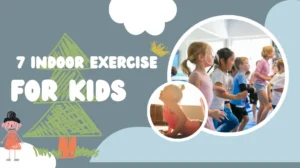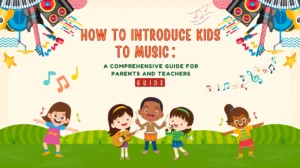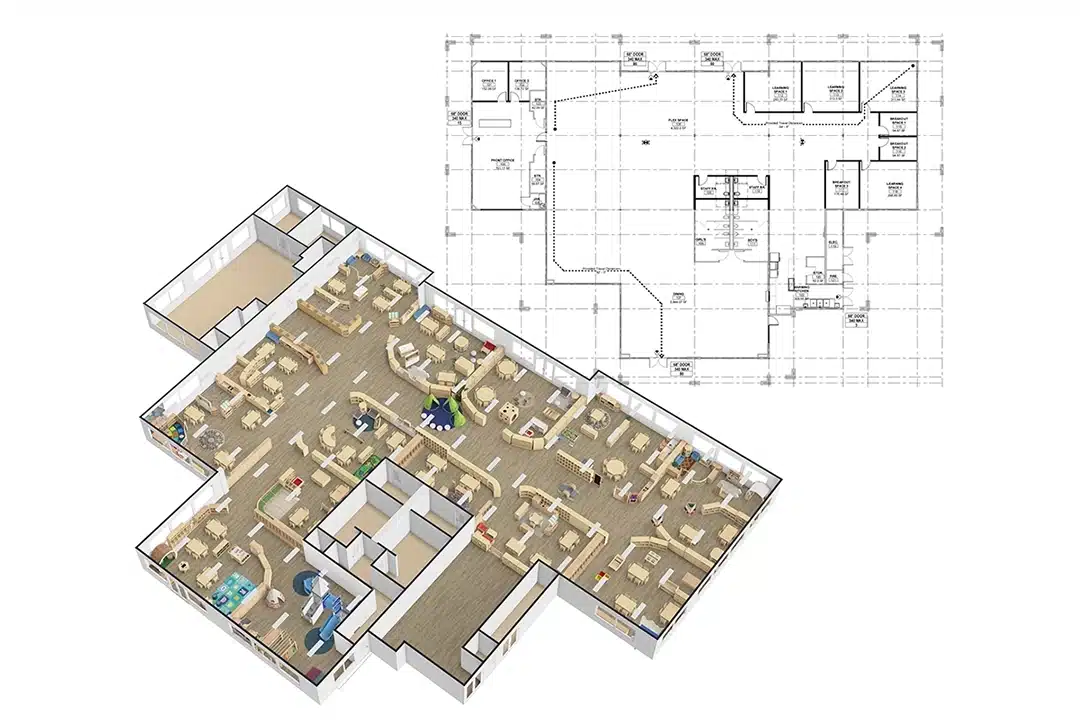Education is one of the most pivotal decisions a parent can make for their child. In recent years, the debate over Charter School vs Public School has intensified as families seek the best educational environments. But what are the true distinctions between these two systems? While both aim to educate, their approach, governance, funding, and outcomes differ dramatically. Understanding these differences can empower parents, educators, and policymakers to make informed decisions.
These questions are common, and the answers are often clouded by conflicting opinions and confusing statistics. Some argue that charter schools offer more flexibility and innovation, while others insist that public schools provide stronger stability and resources. But is that truly the case?
In this article, we’ll break down the key differences and advantages of Charter School vs Public School, giving you the clarity and insights you need to make the best choice for your child’s future.
What is a Charter School vs a Public School?
When comparing charter schools and public schools, the first step is understanding what each institution is, how it’s structured, how it’s governed, and what kind of experience it offers to students and families.

What is a Charter School?
A charter school is a public school that operates under a performance contract, or “charter,” with a school district, a state board of education, or another public entity. This charter gives the school a significant degree of freedom from the regulations that traditional public schools must follow. In exchange for this autonomy, the charter school is held to a high level of accountability for student academic results and financial performance. If the school doesn’t meet the goals outlined in its charter, the charter can be revoked and the school can be closed. This is a powerful form of accountability that doesn’t exist in the same way for a traditional public school.

What is a Public School?
A public school is a government-run educational institution that is funded by federal, state, and local tax revenues. Unlike charter schools, public schools operate within a centralized school district and are subject to strict regulations set by the state and local education authorities.
Public schools must accept all students residing within their assigned geographical boundary. Their curriculum, staffing, and policies are standardized across the district and closely monitored to ensure compliance with state education codes.

Charter Schools vs Public Schools: Key Differences
The most significant differences between a charter school vs. public school lie in their operational structures. While both aim to provide a quality education, they go about it in very different ways. I’ve broken down the key differences to help you see the stark contrast.
Public Funding and Financial Management
One of the most common misconceptions about a charter school vs public school is that charter schools are not publicly funded. This is false. Both are funded by taxpayers, but the way the money flows is different.
A traditional public school receives its funding from a combination of local property taxes, and state and federal funds. This money is often allocated to the school district, which then distributes it among the schools. The budget is often large and complex, managed by a central administration. A public school’s financial stability is generally very high due to this consistent, district-wide funding.
A charter school, on the other hand, receives its funding on a per-pupil basis from the state. The funding per student is often less than what a traditional public school receives. This is because charter schools do not receive local funds from property taxes in the same way that public schools do. This lower funding per student means charter schools must be more creative and efficient with their resources. They often rely more on grants, private donations, and fundraising to bridge the financial gap. This distinction in funding is a major point of the charter school vs public school debate, as critics argue it creates an unfair financial disadvantage.
Admissions Policies and Student Enrollment
A traditional public school is open to every child who resides within its boundaries. There is no application, no lottery, and no selection process. As long as a family lives in the attendance zone, their child has a guaranteed spot in the school. This open-door policy ensures universal access to education, a core tenet of the public school system.
Charter schools have no attendance zones. They must accept any student who applies, but if they receive more applications than they have seats, they must hold a lottery to determine admission. They cannot select students based on academic ability, behavior, or any other factor. The lottery system is designed to make the process fair and transparent.
Special Education Services
Public schools are legally required to provide a full range of special education services under the Individuals with Disabilities Education Act (IDEA). These services include individualized education plans (IEPs), specialized instruction, and a team of certified special education teachers and therapists.
Charter schools are also required by law to serve students with disabilities, but their ability to do so varies widely. Some schools specialize in and excel at serving students with special needs, while others lack the resources or trained staff to adequately support these students.
Staffing
Staffing practices often reflect the schools’ differing governance structures.
In public schools, staff are generally members of teachers’ unions, enjoy job security, and follow strict salary scales based on years of service and qualifications. Hiring and dismissal processes are also more formalized and often time-consuming.
Charter schools typically have non-union staffs and greater flexibility in hiring, firing and salary setting. This allows for greater flexibility in hiring nontraditional educators or teachers who have specialized skills but are not necessarily state-certified.
Curriculum
A traditional public school must follow state-mandated curriculum standards. While teachers have some flexibility, the core subjects and learning objectives are dictated by the school district and state. This ensures a consistent education across all public schools, but it can also make it difficult for an individual school to innovate or specialize. The curriculum is often a “one-size-fits-all” approach, designed to meet the needs of a broad student population.
Charter schools have more curricular freedom. They can adopt project-based learning models, thematic instruction, or focus on specific areas such as environmental science, coding, or global studies. This flexibility allows charters to tailor education to community needs and student interests, but it also means oversight and curriculum rigor can vary.
School Rules and Regulations
Public schools are required to follow a comprehensive set of rules regarding school discipline, attendance, grading, and student behavior. These rules are consistent across the district and intended to ensure fairness and compliance with state laws.
Charter schools are exempt from many district-level rules, allowing them to establish their own behavior codes, dress policies, and academic calendars. While this offers flexibility, it can lead to disparities in student experiences.
Operating Structure
Public schools are managed by elected or appointed school boards and governed by district superintendents. Their operations are centralized, and decisions are made at the district or state level.
Charter schools operate independently. Each school has its own governing board that oversees budgets, staffing, and strategic planning. This structure gives them more autonomy but also demands stronger internal leadership.

Charter School vs Public School: Similarities
While the differences between charter and public schools are often emphasized, it’s equally important to recognize where these two education models overlap. Despite distinct governance structures and operational philosophies, charter and public schools share several foundational principles.
Ground Rules
At their core, both charter and public schools are public institutions. This means:
- They are tuition-free.
- They are open to all students, regardless of race, income, or background.
- They cannot charge admission fees or base enrollment on academic performance.
Both are forms of public service. The goal of providing a free education for every child is a value held dear by both types of schools.
Shared Goals and Outcomes
Both public and charter schools strive to provide high-quality education, support student development, and prepare children for future academic and career success.
Dedicated teachers, administrators, and families exist in both systems, working tirelessly to help students reach their potential.
In classrooms across the country, dedicated educators in both charter and public schools work every day to help students thrive. The methods may vary, but the destination remains the same.

Pros and Cons of Attending a Charter School vs a Public School
While both charter schools and public schools aim to educate children effectively, each comes with its own strengths and weaknesses. Understanding the pros and cons of each system can guide parents and decision-makers toward the right fit for their children or communities.
Advantages of Charter Schools
Charter schools offer a number of appealing benefits, particularly for families looking for specialized instruction or more involvement in their child’s education.
1. Curriculum Flexibility
Charter schools have the freedom to design unique curricula. This can include programs focused on STEM, arts, languages, or project based learning. This allows them to innovate in ways traditional public schools cannot.
2. Smaller Class Sizes
Many charter schools cap enrollment, leading to smaller class sizes and more individualized attention. This environment can be ideal for students who need a more focused setting to thrive.
3. Mission-Driven Learning Environment
Most charter schools are built around a central philosophy or goal, whether it’s preparing students for college, developing bilingual proficiency, or cultivating creativity. This focus often fosters a strong sense of community and shared purpose among students, parents, and educators.
4. Higher Parent Engagement
Charter schools often require or strongly encourage parental involvement, creating a tight-knit community and support network for students.
5. Performance-Based Accountability
Charter schools are held accountable for student performance and financial management. Schools that do not meet benchmarks risk closure, which motivates high standards and rapid intervention when issues arise.
Disadvantages of Charter Schools
Despite their advantages, charter schools face a range of limitations and risks that families must consider.
1. Inconsistent Quality
Not all charter schools perform well. Some suffer from weak leadership, poor funding, or unstable staff, leading to poor student outcomes. Quality can vary widely even within the same city or district.
2. Less Oversight
Although they are publicly funded, charter schools often operate under less scrutiny than district-run public schools. This can lead to management issues, financial mismanagement, or lack of accountability in some cases.
3. Limited Special Education Services
While required by law to serve all students, many charter schools lack the infrastructure or specialized personnel to fully support students with disabilities.
4. Higher Staff Turnover
Due to more flexible employment rules, many charter schools experience higher teacher turnover rates. Teachers may lack union protections and may work under different expectations in terms of hours, pay, and support.
5. No Transportation or Facilities Funding
Unlike traditional public schools, charter schools often must find and fund their own buildings. This can limit their ability to offer gymnasiums, libraries, or cafeterias, and transportation services are rarely provided.
Advantages of Public Schools
1. Universal Access
Public schools are open to all students within a given geographic area, regardless of academic ability, socioeconomic status, or language proficiency. This ensures a more inclusive student body and reflects the diversity of the community.
2. Comprehensive Services and Support Systems
District-run public schools typically have the infrastructure and funding to provide special education services, school counselors, extracurricular programs, and transportation. These wraparound services support a wide range of student needs.
3. Experienced, Certified Teachers
Public school teachers must meet state licensing requirements, undergo background checks, and complete continuing education. This helps ensure baseline competency and accountability across the board.
4. Stability and Continuity
With long-established systems and funding streams, traditional public schools tend to offer greater stability in terms of leadership, staffing, and community ties. They are less likely to be suddenly shut down due to performance issues.
Disadvantages Advantages of Public Schools
1. Overcrowding
In urban or underfunded districts, public schools may struggle with overcrowded classrooms and limited resources, making personalized instruction difficult.
2. Administrative Constraints
Large school districts are often governed by complex policies, which can make reform slow and limit the ability of schools to adapt quickly to students’ needs.
3. Geographical Limitations
Students are assigned schools based on their residential address. Families dissatisfied with their zoned school may find transferring difficult without enrolling in magnet programs or moving.
4. Less Flexibility in Curriculum
Public schools must follow state-mandated standards, which may not suit all learning styles or student interests. There is limited room for innovation or specialized programs.
5. Standardized Testing Emphasis
Public schools are required to participate in state-mandated standardized tests, which often drive instruction. As a result, schools may prioritize “teaching to the test,” reducing time spent on creative learning, critical thinking, and non-tested subjects like art and physical education.

Choosing Between a Charter School and Public School
Making a choice between a charter school vs public school is a deeply personal decision. As someone with a lot of experience in the education space, I can tell you that there is no single “right” answer. The best school is the one that is the best fit for your child. I’ve broken down a few steps you can take to make your choice with confidence.
Consider the Child’s Learning Style and Needs
Some children thrive in highly structured, traditional environments, while others need hands-on, flexible approaches that charter schools often provide. If a child has special learning needs, it is crucial to evaluate the school’s ability to accommodate those effectively.
Understand the School Culture and Expectations
Different schools promote different values. Some charter schools emphasize discipline and academic rigor, while others focus on creativity and community. Parents should ask about homework policies, behavior expectations, and parent involvement requirements.
Compare Academic Performance and Data
The key to evaluating a school’s effectiveness lies in examining achievement data, such as test scores, graduation rates, and college readiness. To make a fair comparison, these data should be weighed against the school’s student population and resources.

A Final Checklist
As you make your final decision on a charter school vs. public school, I recommend creating a simple checklist. You can rate each school on a scale of 1 to 10 for each of your top priorities. This can help you visualize your options and make a final choice based on what truly matters to you.
- Academic Performance: How do test scores and graduation rates stack up?
- Curriculum: Does the school offer the specialized programs you want?
- School Culture: Does the school feel welcoming and safe?
- Resources: Does the school have the facilities and support services your child needs?
- Logistics: Is the location and schedule a good fit for your family?
FAQs
- Can my child attend any charter school?
Yes, but if demand exceeds capacity, admission is usually determined by a lottery. - Are public schools better funded than charter schools?
Public schools typically receive more funding for facilities and services due to local tax revenues. - Do charter schools have certified teachers?
It depends on the state. Some states do not require full certification for charter school teachers. - Are charter schools public schools?
Yes, charter schools are publicly funded and tuition-free, but they operate independently from the local school district. - Can charter schools be closed down?
Yes, if they fail to meet performance or financial standards, their charter can be revoked and the school closed. - Can I switch from a charter school back to a public school?
Yes. Because both are part of the public education system, students can transition between charter and public schools, subject to availability. - Do students in charter schools take standardized tests?
Yes. Charter school students are typically required to take the same state standardized tests as public school students.
Conclusion
The debate over charter school vs public school is complex, with valid arguments on both sides. There is no single “better” option. The best choice is the one that meets your child’s unique needs and aligns with your family’s values. By understanding the key differences and similarities, you can make an informed decision that will set your child up for a successful educational journey.













